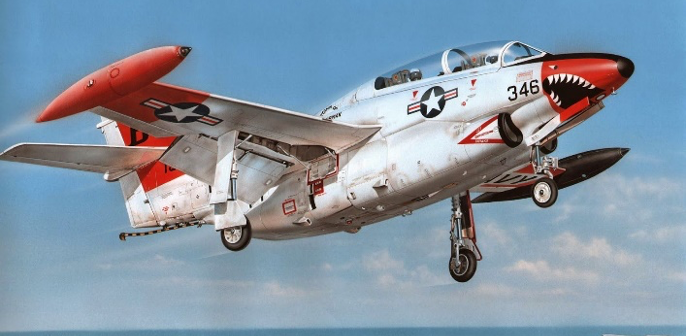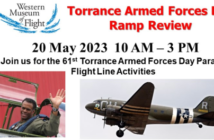It was the middle of summer 1968 when I started the Carrier Qualification (CQ) phase of my training to become a Naval Aviator. I was in Pensacola Florida flying the North American T-2B Buckeye, a twin-engine jet, two place trainer. The airplane was a real hotrod compared to the single engine T-2A which I had flown in Meridian, Mississippi.
Finally, it was our day to complete our CQ portion of training. There was an instructor leading a flight of four students out to the boat, the USS Randolph CVS-15. It was 60 to 80 miles south of Pensacola in the Gulf of Mexico. Once overhead we would wait our turn to be called down to the landing pattern to do our thing. The plan was for each student to get two touch-and-go’s and then three arrested landings or “Traps”.
After my first “Trap” I was directed up to the number one catapult for my first “Cat Shot”. I think I was more afraid about screwing up my taxiing than I was about the landings or takeoffs. The plane directors demanded total attention to their hand signals. I was finally all hooked up to the catapult launch gear and the Catapult Officer was now the one giving me signals. The Cat Officer gives signals to the pilot above the waist and to the flight deck crew below the waist. Once tension had been taken on the airplane, I was given the signal to go to full power and release the brakes. I then took a look inside the cockpit to make sure everything was working as it should be. I cycled the flight controls and re-directed my attention to the Cat Officer, giving him a smart salute to let him know I was ready to go. I put my head firmly against the head rest. Looking straight ahead, I could see out of my peripheral vision the Cat Officer touching the flight deck which was the signal to the Cat crew to fire the Cat.
When that catapult fires you are literally slung into the air at around 12 transverse “G’s” reaching around 125Kts at the end of the stroke. You go 0 to 125Kts in about 150 feet; it is better than any “EE” ticket ride at Disneyland. Once the airplane is released from the catapult it feels like you just flamed out. The extreme acceleration from the catapult is now just the thrust developed by the engines. This causes your head to smartly come off the head rest and you are now flying. The next task is to find your downwind interval, power back before you exceed the landing gear limit speed and level off without ballooning above 500 feet. Somewhere in there you need to remember to lower your hook. A lot happens real fast. Right in the middle of all this I heard this God like voice over the radio: “Son, next time take your feet off the brakes as you left two black marks on my flight deck and you are going flying whether you want to or not”. I guess in the heat of the battle I forgot to take my feet off the brakes when the Catapult Officer gave me the signal. I am sure I was at sensory overload at that point.
I will never forget my first Cat Shot!




